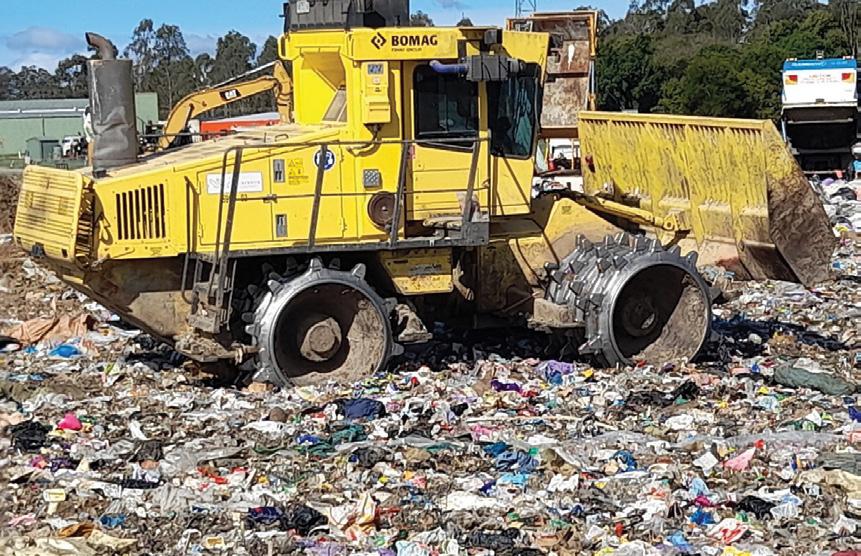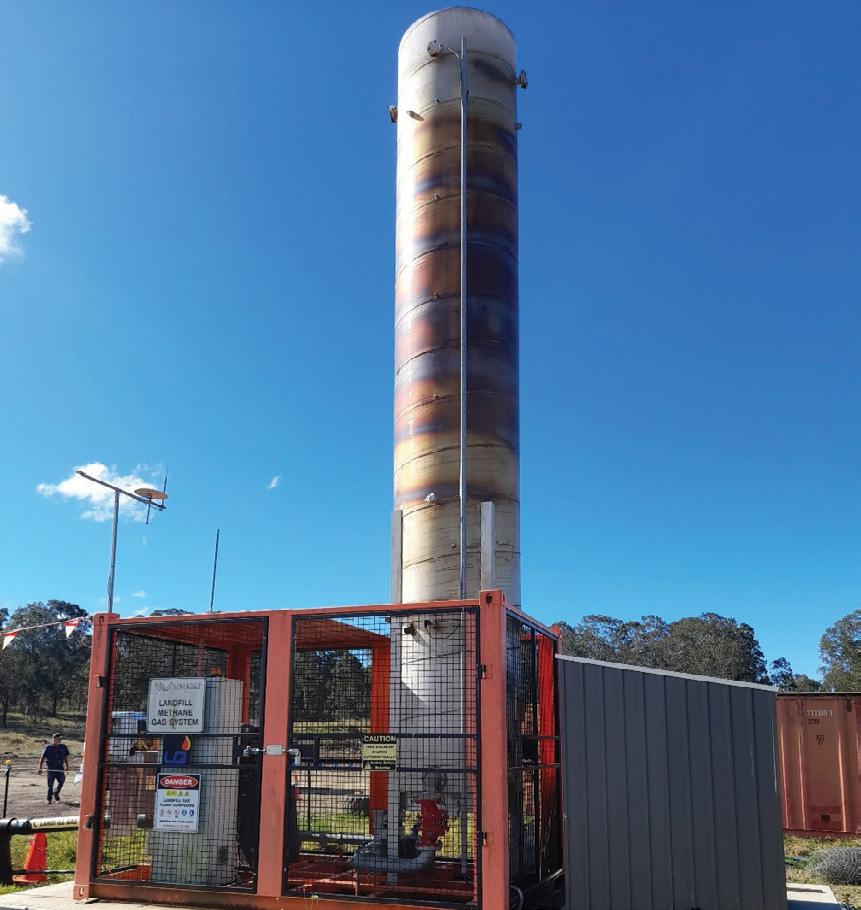
2 minute read
Methane Flare
REDUCES COUNCIL’S CARBON FOOTPRINT
The state-of-the-art Grafton Regional Landfill facility uses methane capture technology to greatly reduce its carbon footprint, and has further plans to start generating its own electricity in the future.
As landfill waste breaks down it releases greenhouse gases, including methane, which is approximately 27 times more potent than carbon dioxide. Instead of releasing into the atmosphere, the methane produced by Clarence Valley’s waste is captured onsite, combusted by a flare and converted to carbon dioxide. As a result of the methane flare, Clarence Valley Council has reduced its greenhouse gas emissions by 17,000 tonnes per year. The flare was introduced in December 2013, which equates to a saving of about 144,500 tonnes of harmful greenhouse gas emissions to date. Throughout the landfill are a series of gas collection wells that transport the gas under vacuum to the flare, which burns at about 800 degrees Celsius to convert the methane to carbon dioxide and water vapour. “Methane flares are certainly commonplace in the larger metropolitan landfills, but not so much in medium-sized regional landfills like Grafton,” Coordinator Waste and Sustainability Ken Wilson said. The Grafton Regional Landfill facility has fully complied with stringent design and monitoring requirements to control potential pollution since its construction in 1998. “Landfills are not generally known as being environmentally friendly,” Mr Wilson said. “The Grafton Regional Landfill uses industry best practice to ensure we have in place the many safeguards and procedures to protect the environment whether it’s air, groundwater, surface water or resource recovery.”

FAST FACTS: METHANE FLARE PROJECT AT GRAFTON REGIONAL LANDFILL
The methane flare at the Grafton Regional Landfill was commissioned on 2 December 2013, after the Federal Government had introduced a carbon tax in July 2012, which was repealed two years later. As a result of contracts made with the Federal Government during that period, Council benefits financially from the flare’s emissions reductions under the Emissions Reduction Fund. This funds the maintenance and expansion of the gas capture and flaring system. 1.
Landfill staff are in the process of planning the next phase of emissions reductions with renewable energy development at the facility: • Generate electricity from captured methane gas • 2.5 MW solar farm at land fill site • Total output up to 3.5MW of energy fed into the grid - equivalent to more than 90 per cent of Council’s electricity demand and cutting emissions by over 40 per cent. Clarence Valley Council’s Community Energy and Emissions Reduction Strategy was adopted in July 2021 following the adoption in 2018 of ambitious renewable energy and greenhouse gas emissions reduction targets for its operations. This includes supplying 50 per cent of Council’s electricity demand from renewable energy by 2030, with the long-term goal to source all electricity from renewable energy, and reducing greenhouse gas emissions by 40 per cent. The strategy is informed by the global consensus that we all need to act to reduce emissions rapidly to align with the goals of key international agreements and reports.










